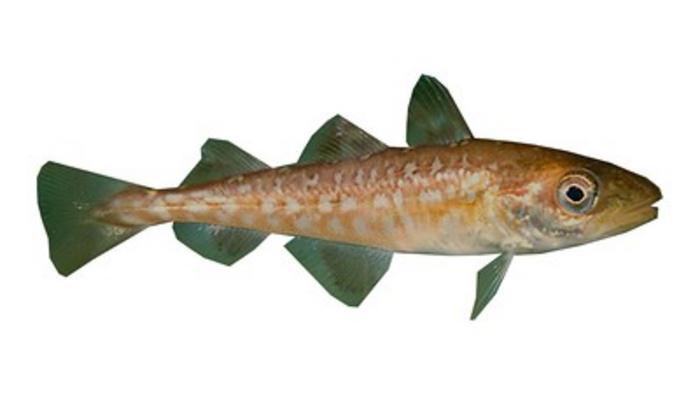During recent periods of unusually warm water in the Gulf of Alaska, young Pacific cod in near shore safe havens where they typically spend their adolescence did not experience the protective effects those areas typically provide, a new Oregon State University study found.

Credit: Courtesy of Ben Laurel, NOAA Alaska Fisheries Science Center
During recent periods of unusually warm water in the Gulf of Alaska, young Pacific cod in near shore safe havens where they typically spend their adolescence did not experience the protective effects those areas typically provide, a new Oregon State University study found.
Instead, during marine heat waves in 2014-16 and 2019, young cod in these near shore “nurseries” around Kodiak Island in Alaska experienced significant changes in their abundance, growth rates and diet, with researchers estimating that only the largest 15-25% of the island’s cod population survived the summer. Even after the high temperatures subsided, the cod have yet to return to pre-heat wave size and diet.
The findings, published today in the journal Scientific Reports, may have broader implications for marine fish populations worldwide, as marine heat waves become longer and more frequent with climate change, the researchers said.
“These coastal habitats aren’t supporting fish in the same way that they used to as a result of marine heat waves,” said lead author Hillary Thalmann, a graduate student in OSU’s Department of Fisheries, Wildlife and Conservation Sciences. “That’s a novel finding, because we don’t always look at the nurseries as a place where size-selective mortality could be occurring rapidly.”
Pacific cod, a popular choice for fish and chips, is the second-largest commercial groundfish fishery off the coast of Alaska. The 2022 commercial harvest totaled 403 million pounds and was valued at $225 million, according to NOAA Fisheries. Cod also has a long history in Alaskan culture and is important to Indigenous communities in the region.
The nurseries are shallow areas along shorelines with lots of aquatic vegetation, including eelgrass, algae and kelp, which attract lots of food for the fish and provide hiding places where they can avoid predators. Typically, they are considered safe havens for small Pacific cod — areas where the fish go at around 3 months old to eat and grow as much as they can during their first summer and fall.
But during the two recent marine heat waves in the Gulf of Alaska, water temperatures were recorded at 58 degrees Fahrenheit, almost 6 degrees above normal. Together, the two heat waves are considered the most extreme warming events on record in the Northeast Pacific Ocean, and the effects on the cod population were so severe that the fishery was closed in 2020 and a federal disaster was declared in 2022.
Previous OSU research has found that the higher temperatures triggered earlier reproduction and high mortality among young Pacific cod. The new study focuses on the physiological disruptions the young cod experienced while occupying the coastal nurseries.
Researchers used juvenile Pacific cod collected by the NOAA Alaska Fisheries Science Center Fisheries Behavioral Ecology program from 16 sites around Kodiak Island in mid-July and late August for the years 2006-2019. This sampling was part of routine population monitoring for the cod fishery.
For the July sample, researchers looked at the fishes’ otoliths, tiny bony structures that chronicle a fish’s growth similar to the rings of trees. Measuring the otoliths allowed researchers to calculate the fishes’ precise rate of growth up to the July sampling date, and then calculate their projected size based on maintaining that same growth rate into August.
However, when they looked at the August sample, the fish were 30% bigger than the size predicted by the established growth rate, and there were almost no small fish present in the sample. The only way researchers were able to account for the size of the fish in August was to remove all the small fish from the July sample and leave just the largest 15-25% of fish following the projected growth rate trajectory.
“If we removed the little guys and grew the big guys — the top 15-25% — through to August based on the growth rates we saw earlier in the summer, then we got the size range that we see in those heat wave years,” Thalmann said. “It’s important to show that with heat events like this, size-selective mortality can continue in the cod population beyond just their early life in the open water,” where the larvae spend their first three months.
Size-selective mortality is the phenomenon of survival being determined by an organism’s size; here, only the biggest fish appear to have survived.
“We saw these differences in size in the nursery, and we tried to explain them with growth rates and tried to explain them with diet, but we couldn’t explain it all,” Thalmann said. “There was something out there, probably size-selective mortality, that was the major driver for what we were seeing.”
Moving forward, researchers say changing ocean conditions may mean that Pacific cod have to move further north to find optimal growth environments, or there may be a shift toward bigger cod being the only ones to survive and contribute genetic information to subsequent generations.
“If the marine heat waves continue, there will probably be some changes in both the distribution and the quality of these populations,” Thalmann said. “I don’t think it’s the end of fish and chips, but I do think it’s a cautionary tale for climate change and the shifting dynamics of fisheries in warm temperatures.”
Co-authors on the study were Zoe Almeida, Kaitlyn Osborne, Kaylee Marshall and Jessica Miller at OSU and Benjamin Laurel at the NOAA Alaska Fisheries Science Center in Newport, Oregon.
Journal
Scientific Reports
DOI
10.1038/s41598-024-63897-w
Method of Research
Data/statistical analysis
Subject of Research
Animals
Article Title
Marine heatwaves alter the nursery function of coastal habitats for juvenile Gulf of Alaska Pacific cod
Article Publication Date
27-Jun-2024
COI Statement
The authors declare no competing interests.




